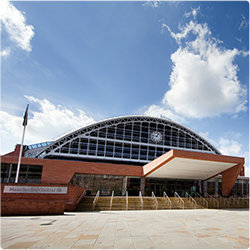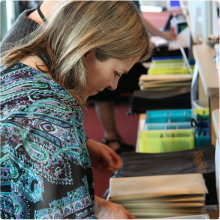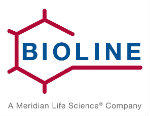
The Society’s Spring Conference attracts over 1000 attendees from the UK and further afield and is Europe’s largest annual gathering of microbiologists. In 2013, we were honoured to announce that the Prize Medal Lecture was delivered by Nobel Prize winner Harald zur Hausen from the Deutsches Krebsforschungszentrum (DKFZ; German Cancer Research Center), Germany.
The conference provided a stimulating mixture of symposia, workshops and keynote lectures covering a variety of topical microbiological issues. We received over 450 abstracts, and from these over 160 were selected for oral presentations. In addition, we had over 300 posters on display throughout the week. There was plenty of opportunity for discussion and networking over a drink during the dedicated poster sessions on Monday, Tuesday and Wednesday evening.
Whether you are a veteran microbiologist or just starting out in your career, attending the Society for General Microbiology Spring Conference is a must for all of those with an interest in microbiology.

Viruses are associated with the development of about 11% of all human cancers, with the incidence of the majority of these occurring in developing regions of the world. The International Agency for Research on Cancer has defined seven viruses as carcinogens; the herpes viruses Epstein–Barr virus (EBV) and Kaposi’s sarcoma herpes virus (KSHV), high-risk human papillomaviruses (HPV), human T cell lymphotrophic virus (HTLV-1), hepatitis B and C viruses (HBV and HCV) and human immunodeficiency virus type 1 (HIV-1). New associations between viruses and cancers are emerging, for example Merkel cell polyomavirus (MCPV) and the role this virus plays in the development of Merkel cell carcinoma. Some types of adenovirus and polyomavirus have been found to induce tumours in rodents; these have provided invaluable model systems to study mammalian tumorigenesis. Oncolytic viruses have also been exploited as novel therapies for the treatment of cancers.
The aim of this symposium was to realise the impact of virus infection on the incidence of human cancers worldwide, to gain an understanding of the mechanisms underlying virus-associated cancers and to appreciate the issues surrounding treating and preventing them. It focused on the epidemiology and pathogenesis of cancer-causing viruses, host–virus interactions, the therapeutic exploitation of viruses to treat cancers and the state of play in the development of vaccines and other novel antiviral therapies at that time.
The symposium perfectly complemented 2013’s Society Prize Medal lecture (26 March at 12:10) from Nobel Laureate Professor Harald zur Hausen, who received his Nobel Prize in 2008 for his work establishing the role of papillomaviruses in the development of cancer of the cervix.
Co-colonisation of a niche by numerous micro-organisms is now well documented. Similarly, co-infections involving bacteria, viruses, yeast/fungi and parasites as well as combinations of these occur in many hosts. Interactions between microbes may be synergistic, where the presence of one organism enables another to maximise its pathogenic potential or can be in the form of suppression of one species by another. Although co-infections are increasingly described, their impact is less well understood. Advances in diagnostic microbiology enable detection of microbes with improved sensitivity, but raise questions regarding the clinical significance of the presence of multiple organisms in infection as well as prevention and treatment strategies as well as impact on transmission.
This symposium aims to bring together leaders in the emerging field of co-infection research to highlight recent advances in our understanding of polymicrobial interactions, their impact and future challenges. The two-day symposium focuses on co-colonisation and co-infection in the human host and includes bacterial-viral interactions in the respiratory tract, multi-species bacterial infection in the oral cavity and yeast-bacterial co-infections. Both epidemiological associations and potential molecular mechanisms for these interactions will be discussed.
Jo Jefferies, Friedrich Mühlschlegel and Kate Templeton
Much existing research into host-pathogen interactions has focused on the role of secreted proteins and toxins in overcoming host immunity. However, there is increasing evidence that the nutritional environment within host tissues can have a major impact on pathogen growth and on the expression of microbial virulence factors, and that virulence factors manipulate host metabolism to promote infection. Recent advances in metabolomics, genomics, transcriptomics and metabolic modelling offer new opportunities to address this question and generate a system-level understanding of metabolic interactions at the host–pathogen interface, which in turn may lead to the identification of novel strategies for disease control.
Gail Preston, David Clarke and Andy Waters
Viruses are associated with the development of about 11% of all human cancers with the incidence of the majority of these virus associated cancers occurring in the developing regions of the world. The International Agency for Research on Cancer have defined seven viruses as carcinogens; the herpes viruses Epstein Barr virus (EBV) and Kaposi’s sarcoma herpes virus (KSHV), high-risk human papillomaviruses (HPV) such as types 16 and 18, human T cell lymphotrophic virus (HTLV-1), hepatitis B and C viruses (HBV and HCV) and human immunodeficiency virus, type 1 (HIV-1). New associations between viruses and cancers are emerging as in the case of the recently discovered Merkel cell polyomavirus (MCPV) and the role this virus plays in the development of Merkel cell carcinoma. Some types of adenovirus and polyomavirus although not yet proven to be a cause of human cancers induce tumours in rodents and consequentially have provided invaluable model systems in which to study the mechanisms of mammalian tumourigenesis. Oncolytic viruses have also been exploited as novel therapies for the treatment of cancers. The aim of the symposium is to realize the true impact of virus infection on the incidence of human cancers worldwide and to gain an understanding of the future global impact of viruses on the worldwide cancer burden. To this end it will therefore focus on the epidemiology and the pathogenesis of cancer-causing viruses, the host-virus interactions that contribute to the persistence of these viruses and to the progression of infections to malignancy, to the therapeutic exploitation of viruses to treat cancers as well as the current state of play in the development of vaccines and other novel antiviral therapies.
Sally Roberts, David Blackbourn, Joanna Parish and David Matthews
The growing concern voiced by scientists about the return of a pre-antibiotics era, is beginning to be echoed by the media, the public and policymakers. As scientists we see the need for damage limitation to postpone and ultimately avoid this scenario. Clearly education must play a role in limiting the fall out that a pre-antibiotic scenario will cause to society when antibiotics are no longer available to treat infection. This session is designed to appeal to scientists, academics or students who are keen to explore the roles that we can play as experts, advocates or members of society to combat antibiotic resistance. Some of the key issues associated with countering antibiotic resistance will be explored and we will ask whether there is more that we can do within our roles as ‘experts’ and ‘educators’ to inform the public, the media and policy makers about these issues. Examples of the different audiences currently being targeted through education and the different messages being delivered will also be highlighted. Finally a work shop session that will allow delegates the opportunity to explore the way that antibiotics and antibiotic resistance are taught within science undergraduate curriculums will be offered. This session will discuss whether the educators of the next generation of scientists are partly to blame for this growing problem of antibiotic resistance. Come and give us your views.
Laura Bowater
The growing concern voiced by scientists about the return of a pre-antibiotics era, is beginning to be echoed by the media, the public and policymakers. As scientists we see the need for damage limitation to postpone and ultimately avoid this scenario. Clearly education must play a role in limiting the fall out that a pre-antibiotic scenario will cause to society when antibiotics are no longer available to treat infection. This session is designed to appeal to scientists, academics or students who are keen to explore the roles that we can play as experts, advocates or members of society to combat antibiotic resistance. Some of the key issues associated with countering antibiotic resistance will be explored and we will ask whether there is more that we can do within our roles as ‘experts’ and ‘educators’ to inform the public, the media and policy makers about these issues. Examples of the different audiences currently being targeted through education and the different messages being delivered will also be highlighted. Finally a work shop session that will allow delegates the opportunity to explore the way that antibiotics and antibiotic resistance are taught within science undergraduate curriculums will be offered. This session will discuss whether the educators of the next generation of scientists are partly to blame for this growing problem of antibiotic resistance. Come and give us your views.
Laura Bowater
Co-colonisation of a niche by numerous micro-organisms is now well documented. Similarly, co-infections involving bacteria, viruses, yeast/fungi and parasites as well as combinations of these occur in many hosts. Interactions between microbes may be synergistic, where the presence of one organism enables another to maximise its pathogenic potential or can be in the form of suppression of one species by another. Although co-infections are increasingly described, their impact is less well understood. Advances in diagnostic microbiology enable detection of microbes with improved sensitivity, but raise questions regarding the clinical significance of the presence of multiple organisms in infection as well as prevention and treatment strategies as well as impact on transmission.
This symposium aims to bring together leaders in the emerging field of co-infection research to highlight recent advances in our understanding of polymicrobial interactions, their impact and future challenges. The two-day symposium focuses on co-colonisation and co-infection in the human host and includes bacterial-viral interactions in the respiratory tract, multi-species bacterial infection in the oral cavity and yeast-bacterial co-infections. Both epidemiological associations and potential molecular mechanisms for these interactions will be discussed.
Jo Jefferies, Friedrich Mühlschlegel and Kate Templeton
Much existing research into host-pathogen interactions has focused on the role of secreted proteins and toxins in overcoming host immunity. However, there is increasing evidence that the nutritional environment within host tissues can have a major impact on pathogen growth and on the expression of microbial virulence factors, and that virulence factors manipulate host metabolism to promote infection. Recent advances in metabolomics, genomics, transcriptomics and metabolic modelling offer new opportunities to address this question and generate a system-level understanding of metabolic interactions at the host–pathogen interface, which in turn may lead to the identification of novel strategies for disease control.
Gail Preston, David Clarke and Andy Waters
Viruses are associated with the development of about 11% of all human cancers with the incidence of the majority of these virus associated cancers occurring in the developing regions of the world. The International Agency for Research on Cancer have defined seven viruses as carcinogens; the herpes viruses Epstein Barr virus (EBV) and Kaposi’s sarcoma herpes virus (KSHV), high-risk human papillomaviruses (HPV) such as types 16 and 18, human T cell lymphotrophic virus (HTLV-1), hepatitis B and C viruses (HBV and HCV) and human immunodeficiency virus, type 1 (HIV-1). New associations between viruses and cancers are emerging as in the case of the recently discovered Merkel cell polyomavirus (MCPV) and the role this virus plays in the development of Merkel cell carcinoma. Some types of adenovirus and polyomavirus although not yet proven to be a cause of human cancers induce tumours in rodents and consequentially have provided invaluable model systems in which to study the mechanisms of mammalian tumourigenesis. Oncolytic viruses have also been exploited as novel therapies for the treatment of cancers. The aim of the symposium is to realize the true impact of virus infection on the incidence of human cancers worldwide and to gain an understanding of the future global impact of viruses on the worldwide cancer burden. To this end it will therefore focus on the epidemiology and the pathogenesis of cancer-causing viruses, the host-virus interactions that contribute to the persistence of these viruses and to the progression of infections to malignancy, to the therapeutic exploitation of viruses to treat cancers as well as the current state of play in the development of vaccines and other novel antiviral therapies.
Sally Roberts, David Blackbourn, Joanna Parish and David Matthews
The genus Streptomyces is responsible for the production of almost two-thirds of all clinically used antibiotics in addition to many other bioactive molecules. The current rise in antibiotic-resistant micro-organisms has increased our need for novel approaches to discover antimicrobials. At the forefront of this search is the application of novel systems and synthetic biology approaches to identify and design novel compounds. The research in Streptomyces has traditionally thrived on an excellent community spirit, with excellent collaboration and exchange of ideas. This meeting aims to bring the community together in a symposium that will largely be based on offered papers to encourage cutting-edge, up to date exchange of ideas within the community. The talks will be selected based on the abstracts received and we aim to have a stimulating meeting with lots of short talks and posters.
Paul Hoskisson, Matt Hutchings and Lorena Fernández-Martínez
Co-colonisation of a niche by numerous micro-organisms is now well documented. Similarly, co-infections involving bacteria, viruses, yeast/fungi and parasites as well as combinations of these occur in many hosts. Interactions between microbes may be synergistic, where the presence of one organism enables another to maximise its pathogenic potential or can be in the form of suppression of one species by another. Although co-infections are increasingly described, their impact is less well understood. Advances in diagnostic microbiology enable detection of microbes with improved sensitivity, but raise questions regarding the clinical significance of the presence of multiple organisms in infection as well as prevention and treatment strategies as well as impact on transmission.
This symposium aims to bring together leaders in the emerging field of co-infection research to highlight recent advances in our understanding of polymicrobial interactions, their impact and future challenges. The two-day symposium focuses on co-colonisation and co-infection in the human host and includes bacterial-viral interactions in the respiratory tract, multi-species bacterial infection in the oral cavity and yeast-bacterial co-infections. Both epidemiological associations and potential molecular mechanisms for these interactions will be discussed.
Jo Jefferies, Friedrich Mühlschlegel and Kate Templeton
Much existing research into host-pathogen interactions has focused on the role of secreted proteins and toxins in overcoming host immunity. However, there is increasing evidence that the nutritional environment within host tissues can have a major impact on pathogen growth and on the expression of microbial virulence factors, and that virulence factors manipulate host metabolism to promote infection. Recent advances in metabolomics, genomics, transcriptomics and metabolic modelling offer new opportunities to address this question and generate a system-level understanding of metabolic interactions at the host–pathogen interface, which in turn may lead to the identification of novel strategies for disease control.
Gail Preston, David Clarke and Andy Waters
The genus Streptomyces is responsible for the production of almost two-thirds of all clinically used antibiotics in addition to many other bioactive molecules. The current rise in antibiotic-resistant micro-organisms has increased our need for novel approaches to discover antimicrobials. At the forefront of this search is the application of novel systems and synthetic biology approaches to identify and design novel compounds. The research in Streptomyces has traditionally thrived on an excellent community spirit, with excellent collaboration and exchange of ideas. This meeting aims to bring the community together in a symposium that will largely be based on offered papers to encourage cutting-edge, up to date exchange of ideas within the community. The talks will be selected based on the abstracts received and we aim to have a stimulating meeting with lots of short talks and posters.
Paul Hoskisson, Matt Hutchings and Lorena Fernández-Martínez
Viruses are associated with the development of about 11% of all human cancers with the incidence of the majority of these virus associated cancers occurring in the developing regions of the world. The International Agency for Research on Cancer have defined seven viruses as carcinogens; the herpes viruses Epstein Barr virus (EBV) and Kaposi’s sarcoma herpes virus (KSHV), high-risk human papillomaviruses (HPV) such as types 16 and 18, human T cell lymphotrophic virus (HTLV-1), hepatitis B and C viruses (HBV and HCV) and human immunodeficiency virus, type 1 (HIV-1). New associations between viruses and cancers are emerging as in the case of the recently discovered Merkel cell polyomavirus (MCPV) and the role this virus plays in the development of Merkel cell carcinoma. Some types of adenovirus and polyomavirus although not yet proven to be a cause of human cancers induce tumours in rodents and consequentially have provided invaluable model systems in which to study the mechanisms of mammalian tumourigenesis. Oncolytic viruses have also been exploited as novel therapies for the treatment of cancers. The aim of the symposium is to realize the true impact of virus infection on the incidence of human cancers worldwide and to gain an understanding of the future global impact of viruses on the worldwide cancer burden. To this end it will therefore focus on the epidemiology and the pathogenesis of cancer-causing viruses, the host-virus interactions that contribute to the persistence of these viruses and to the progression of infections to malignancy, to the therapeutic exploitation of viruses to treat cancers as well as the current state of play in the development of vaccines and other novel antiviral therapies.
Sally Roberts, David Blackbourn, Joanna Parish and David Matthews
Co-colonisation of a niche by numerous micro-organisms is now well documented. Similarly, co-infections involving bacteria, viruses, yeast/fungi and parasites as well as combinations of these occur in many hosts. Interactions between microbes may be synergistic, where the presence of one organism enables another to maximise its pathogenic potential or can be in the form of suppression of one species by another. Although co-infections are increasingly described, their impact is less well understood. Advances in diagnostic microbiology enable detection of microbes with improved sensitivity, but raise questions regarding the clinical significance of the presence of multiple organisms in infection as well as prevention and treatment strategies as well as impact on transmission.
This symposium aims to bring together leaders in the emerging field of co-infection research to highlight recent advances in our understanding of polymicrobial interactions, their impact and future challenges. The two-day symposium focuses on co-colonisation and co-infection in the human host and includes bacterial-viral interactions in the respiratory tract, multi-species bacterial infection in the oral cavity and yeast-bacterial co-infections. Both epidemiological associations and potential molecular mechanisms for these interactions will be discussed.
Jo Jefferies, Friedrich Mühlschlegel and Kate Templeton
Much existing research into host-pathogen interactions has focused on the role of secreted proteins and toxins in overcoming host immunity. However, there is increasing evidence that the nutritional environment within host tissues can have a major impact on pathogen growth and on the expression of microbial virulence factors, and that virulence factors manipulate host metabolism to promote infection. Recent advances in metabolomics, genomics, transcriptomics and metabolic modelling offer new opportunities to address this question and generate a system-level understanding of metabolic interactions at the host–pathogen interface, which in turn may lead to the identification of novel strategies for disease control.
Gail Preston, David Clarke and Andy Waters
The genus Streptomyces is responsible for the production of almost two-thirds of all clinically used antibiotics in addition to many other bioactive molecules. The current rise in antibiotic-resistant micro-organisms has increased our need for novel approaches to discover antimicrobials. At the forefront of this search is the application of novel systems and synthetic biology approaches to identify and design novel compounds. The research in Streptomyces has traditionally thrived on an excellent community spirit, with excellent collaboration and exchange of ideas. This meeting aims to bring the community together in a symposium that will largely be based on offered papers to encourage cutting-edge, up to date exchange of ideas within the community. The talks will be selected based on the abstracts received and we aim to have a stimulating meeting with lots of short talks and posters.
Paul Hoskisson, Matt Hutchings and Lorena Fernández-Martínez
Viruses are associated with the development of about 11% of all human cancers with the incidence of the majority of these virus associated cancers occurring in the developing regions of the world. The International Agency for Research on Cancer have defined seven viruses as carcinogens; the herpes viruses Epstein Barr virus (EBV) and Kaposi’s sarcoma herpes virus (KSHV), high-risk human papillomaviruses (HPV) such as types 16 and 18, human T cell lymphotrophic virus (HTLV-1), hepatitis B and C viruses (HBV and HCV) and human immunodeficiency virus, type 1 (HIV-1). New associations between viruses and cancers are emerging as in the case of the recently discovered Merkel cell polyomavirus (MCPV) and the role this virus plays in the development of Merkel cell carcinoma. Some types of adenovirus and polyomavirus although not yet proven to be a cause of human cancers induce tumours in rodents and consequentially have provided invaluable model systems in which to study the mechanisms of mammalian tumourigenesis. Oncolytic viruses have also been exploited as novel therapies for the treatment of cancers. The aim of the symposium is to realize the true impact of virus infection on the incidence of human cancers worldwide and to gain an understanding of the future global impact of viruses on the worldwide cancer burden. To this end it will therefore focus on the epidemiology and the pathogenesis of cancer-causing viruses, the host-virus interactions that contribute to the persistence of these viruses and to the progression of infections to malignancy, to the therapeutic exploitation of viruses to treat cancers as well as the current state of play in the development of vaccines and other novel antiviral therapies.
Sally Roberts, David Blackbourn, Joanna Parish and David Matthews
Historically, the division in microbiological research between bacteriologists and mycologists has overlooked the fact that in many environments bacteria and fungi coexist, interact and in some cases enter into intimate symbioses. Bacteria-fungal interactions have wide-ranging impacts in fields ranging from agriculture, forestry and soil ecology to food science, biofuels and biotechnology. This symposium brings together researchers working across these fields to explore the common themes and diverse molecular mechanisms involved in these interactions.
Gail Preston, Graeme Nicol, Rocky Cranenburgh and John Morrissey
Resistance to therapeutic drugs is an increasing concern for the treatment of a wide variety of infections and cancers, which has resulted in an urgent need for new therapeutics. This two-day symposium reflects the strong interest in the research community for novel approaches leading to next generation antimicrobials. This symposium will cover approaches based on (i) the identification of targets in critical processes during infection and the host response, (ii) understanding and releasing the biosynthetic capacity of silent gene clusters for bioactive small molecules that (meta)genomic sequencing projects have revealed using synthetic and environmental microbiology approaches, (iii) advances in analytical methodologies for improved insight into the biosynthesis and engineering of small bioactive molecules, and (iv) the potential of non-small molecule therapeutics such as antibodies and phage, including regulatory aspects for approval as therapeutics. In summary, the full breadth of antimicrobials will be tackled by discussing advances made in the generation of novel antivirals, antibacterials, and therapeutics effective against infectious eukaryotic agents including fungi.
Geertje Van Keulen, Kim Hardie, Petra Oyston, Wendy Barclay and Paul Bowyer
Viral structural proteins are integral for both protection and transmission of the viral genome once it is released from an infected cell. This workshop will focus on the molecular mechanisms that are required for assembly of virus particles within an infected cell, through to the structural alterations that take place within the virus particle during the entry process. The workshop will cover current research investigating the different molecular mechanisms that viruses utilize to achieve this aim. Topics can include (i) intracellular trafficking of viral components to the site of assembly, (ii) interactions between viral and host cell components that are required to build an infectious virus particle and (iii) virus particle exit/release strategies from the infected cell. The workshop will also cover structural studies that shed new light on the assembly and entry process by revealing the structure of (i) individual viral components, (ii) viral components in complex with host cell factors, (iii) intermediates in the assembly process and (iv) whole virus particles. The workshop will also cover antiviral strategies aimed at inhibiting the assembly process.
Catherine Adamson and Chris McCormick
The innate barriers are the first impediment to replication a virus encounters. The strength of the host innate barrier and the ability of a virus to counteract the host antiviral measures are key to the outcome of infection. This workshop will feature offered presentations about host innate barriers including the interferon system and about virus genes that act to control or overcome the innate system. Offered presentation can range from basic studies on mechanisms of innate immunity and viral countermeasures, to applied strategies for example that utilize innate immune effectors and antivirals or manipulate the innate barriers in cells to increase virus replication for the purposes of isolation, or vaccine production.
Wendy Barclay and Suresh Kuchipudi
The development of deep sequencing technologies has revolutionized the study of complex viral populations in the host. This has led to the discovery of previously unknown viral pathogens in patient samples and provided important insights into the prevalence of viruses in symptomatic and asymptomatic individuals. The discoveries are beginning to inform our understanding of the contribution of viruses to complex diseases, including those with genetic and environmental risk factors.
This workshop will provide a forum for the presentation of current studies on the viromes of humans, animals and plants, on viromic approaches to complex diseases, and on the technologies involved in the generation and analysis of viromic data.
David Evans and Andrew Davison
This workshop will cover all aspects of vaccinology and antiviral therapies. This will include characterisation of immune responses underpinning the development and trial of novel vaccines, improvements to existing vaccines, the selection of adjuvants and the innate immune response, post-vaccine surveillance, adverse events in vaccinology, vaccine response and failure and mathematical modelling of vaccine-preventable viral diseases. The workshop will cover all types of vaccines including killed, attenuated, recombinant and subunit as well as experimental vaccines and model systems. Antiviral research from viral or cellular target identification to drug design and clinical trials, immune system stimulation, host genetics, and emergence of drug resistance will be included.
Nicola Rose and Janet Daly
Historically, the division in microbiological research between bacteriologists and mycologists has overlooked the fact that in many environments bacteria and fungi coexist, interact and in some cases enter into intimate symbioses. Bacteria-fungal interactions have wide-ranging impacts in fields ranging from agriculture, forestry and soil ecology to food science, biofuels and biotechnology. This symposium brings together researchers working across these fields to explore the common themes and diverse molecular mechanisms involved in these interactions.
Gail Preston, Graeme Nicol, Rocky Cranenburgh and John Morrissey
Resistance to therapeutic drugs is an increasing concern for the treatment of a wide variety of infections and cancers, which has resulted in an urgent need for new therapeutics. This two-day symposium reflects the strong interest in the research community for novel approaches leading to next generation antimicrobials. This symposium will cover approaches based on (i) the identification of targets in critical processes during infection and the host response, (ii) understanding and releasing the biosynthetic capacity of silent gene clusters for bioactive small molecules that (meta)genomic sequencing projects have revealed using synthetic and environmental microbiology approaches, (iii) advances in analytical methodologies for improved insight into the biosynthesis and engineering of small bioactive molecules, and (iv) the potential of non-small molecule therapeutics such as antibodies and phage, including regulatory aspects for approval as therapeutics. In summary, the full breadth of antimicrobials will be tackled by discussing advances made in the generation of novel antivirals, antibacterials, and therapeutics effective against infectious eukaryotic agents including fungi.
Geertje Van Keulen, Kim Hardie, Petra Oyston, Wendy Barclay and Paul Bowyer
Viral structural proteins are integral for both protection and transmission of the viral genome once it is released from an infected cell. This workshop will focus on the molecular mechanisms that are required for assembly of virus particles within an infected cell, through to the structural alterations that take place within the virus particle during the entry process. The workshop will cover current research investigating the different molecular mechanisms that viruses utilize to achieve this aim. Topics can include (i) intracellular trafficking of viral components to the site of assembly, (ii) interactions between viral and host cell components that are required to build an infectious virus particle and (iii) virus particle exit/release strategies from the infected cell. The workshop will also cover structural studies that shed new light on the assembly and entry process by revealing the structure of (i) individual viral components, (ii) viral components in complex with host cell factors, (iii) intermediates in the assembly process and (iv) whole virus particles. The workshop will also cover antiviral strategies aimed at inhibiting the assembly process.
Catherine Adamson and Chris McCormick
The innate barriers are the first impediment to replication a virus encounters. The strength of the host innate barrier and the ability of a virus to counteract the host antiviral measures are key to the outcome of infection. This workshop will feature offered presentations about host innate barriers including the interferon system and about virus genes that act to control or overcome the innate system. Offered presentation can range from basic studies on mechanisms of innate immunity and viral countermeasures, to applied strategies for example that utilize innate immune effectors and antivirals or manipulate the innate barriers in cells to increase virus replication for the purposes of isolation, or vaccine production.
Wendy Barclay and Suresh Kuchipudi
The development of deep sequencing technologies has revolutionized the study of complex viral populations in the host. This has led to the discovery of previously unknown viral pathogens in patient samples and provided important insights into the prevalence of viruses in symptomatic and asymptomatic individuals. The discoveries are beginning to inform our understanding of the contribution of viruses to complex diseases, including those with genetic and environmental risk factors.
This workshop will provide a forum for the presentation of current studies on the viromes of humans, animals and plants, on viromic approaches to complex diseases, and on the technologies involved in the generation and analysis of viromic data.
David Evans and Andrew Davison
This workshop will cover all aspects of vaccinology and antiviral therapies. This will include characterisation of immune responses underpinning the development and trial of novel vaccines, improvements to existing vaccines, the selection of adjuvants and the innate immune response, post-vaccine surveillance, adverse events in vaccinology, vaccine response and failure and mathematical modelling of vaccine-preventable viral diseases. The workshop will cover all types of vaccines including killed, attenuated, recombinant and subunit as well as experimental vaccines and model systems. Antiviral research from viral or cellular target identification to drug design and clinical trials, immune system stimulation, host genetics, and emergence of drug resistance will be included.
Nicola Rose and Janet Daly
This workshop will involve clinical virology cases or short papers which relate to studies relevant to the UK Clinical Virology Network (www.clinicalvirology.org).
Kate Templeton and Kevin Brown
This workshop will focus on the regulation of viral and host gene expression at the transcriptional and post-transcriptional level by virally-encoded factors and address how viruses control the replication of their genomes.
David Matthews and Michelle West
Understanding disease development mechanistically at the cellular, genetic and whole organism level is a vital element in the development of novel therapeutic strategies such as vaccines and small molecule inhibitors. To this end, this workshop will serve as a forum for the presentation of new and exciting data pertaining to all aspects of the pathogenesis of virus infection.
Paul Duprex and Sally Roberts
This workshop will cover how the diversity of RNA function is exploited by viruses and how this has helped our understanding of the working of the cell, together with the use of RNA molecules to both understand and control viral infection.
Nicola Stonehouse and Joel Milner
Historically, the division in microbiological research between bacteriologists and mycologists has overlooked the fact that in many environments bacteria and fungi coexist, interact and in some cases enter into intimate symbioses. Bacteria-fungal interactions have wide-ranging impacts in fields ranging from agriculture, forestry and soil ecology to food science, biofuels and biotechnology. This symposium brings together researchers working across these fields to explore the common themes and diverse molecular mechanisms involved in these interactions.
Gail Preston, Graeme Nicol, Rocky Cranenburgh and John Morrissey
Resistance to therapeutic drugs is an increasing concern for the treatment of a wide variety of infections and cancers, which has resulted in an urgent need for new therapeutics. This two-day symposium reflects the strong interest in the research community for novel approaches leading to next generation antimicrobials. This symposium will cover approaches based on (i) the identification of targets in critical processes during infection and the host response, (ii) understanding and releasing the biosynthetic capacity of silent gene clusters for bioactive small molecules that (meta)genomic sequencing projects have revealed using synthetic and environmental microbiology approaches, (iii) advances in analytical methodologies for improved insight into the biosynthesis and engineering of small bioactive molecules, and (iv) the potential of non-small molecule therapeutics such as antibodies and phage, including regulatory aspects for approval as therapeutics. In summary, the full breadth of antimicrobials will be tackled by discussing advances made in the generation of novel antivirals, antibacterials, and therapeutics effective against infectious eukaryotic agents including fungi.
Geertje Van Keulen, Kim Hardie, Petra Oyston, Wendy Barclay and Paul Bowyer
This symposium will cover how the diversity of RNA function is exploited by viruses and how this has helped our understanding of the working of the cell, together with the use of RNA molecules to both understand and control viral infection.
Nicola Stonehouse, Joel Milner, Ian Goodfellow and Andrew Lever
Historically, the division in microbiological research between bacteriologists and mycologists has overlooked the fact that in many environments bacteria and fungi coexist, interact and in some cases enter into intimate symbioses. Bacteria-fungal interactions have wide-ranging impacts in fields ranging from agriculture, forestry and soil ecology to food science, biofuels and biotechnology. This symposium brings together researchers working across these fields to explore the common themes and diverse molecular mechanisms involved in these interactions.
Gail Preston, Graeme Nicol, Rocky Cranenburgh and John Morrissey
Resistance to therapeutic drugs is an increasing concern for the treatment of a wide variety of infections and cancers, which has resulted in an urgent need for new therapeutics. This two-day symposium reflects the strong interest in the research community for novel approaches leading to next generation antimicrobials. This symposium will cover approaches based on (i) the identification of targets in critical processes during infection and the host response, (ii) understanding and releasing the biosynthetic capacity of silent gene clusters for bioactive small molecules that (meta)genomic sequencing projects have revealed using synthetic and environmental microbiology approaches, (iii) advances in analytical methodologies for improved insight into the biosynthesis and engineering of small bioactive molecules, and (iv) the potential of non-small molecule therapeutics such as antibodies and phage, including regulatory aspects for approval as therapeutics. In summary, the full breadth of antimicrobials will be tackled by discussing advances made in the generation of novel antivirals, antibacterials, and therapeutics effective against infectious eukaryotic agents including fungi.
Geertje Van Keulen, Kim Hardie, Petra Oyston, Wendy Barclay and Paul Bowyer
This symposium will cover how the diversity of RNA function is exploited by viruses and how this has helped our understanding of the working of the cell, together with the use of RNA molecules to both understand and control viral infection.
Nicola Stonehouse, Joel Milner, Ian Goodfellow and Andrew Lever
Please note that the final decision on acceptance for either a poster or offered orals was at the reviewers’ discretion and due to the large number of abstracts received it was not always possible to accommodate all choices.
The final Abstracts Book from the Spring Conference is no longer available for download.
In order to ensure your presentation runs smoothly, you are asked to comply with the following:
Submission of abstracts for future conferences will be via our online abstract submission system. Please see future conference pages for details.
If you have any questions regarding submitting an abstract please email [email protected]
 To qualify for Society for General Microbiology member rates, membership subscriptions must be paid by Friday 22 March 2013. Online registrations are accepted up to midnight on Wednesday 20 March 2013. After this time registrations will only be accepted onsite.
To qualify for Society for General Microbiology member rates, membership subscriptions must be paid by Friday 22 March 2013. Online registrations are accepted up to midnight on Wednesday 20 March 2013. After this time registrations will only be accepted onsite.
If you do wish to register onsite, you may wish to download and complete the registration form prior to arrival. Please note a one-off £10 onsite registration fee will be applied to onsite bookings.
What's included in your registration fee?
| Registration Category | Early (Before 22 February) |
Full (After 22 February) |
| Ordinary Member | £70 per day | £80 per day |
| Associate Member | £50 per day | £60 per day |
| PG Student Associate Member | £50 per day | £60 per day |
| Retired/Honorary Member | - | £10 per day |
| Undergraduate Member | - | £10 per day |
| CVN Member* | £70 per day | £80 per day |
| Non-Member | £140 per day | £150 per day |
|
Networking workshop and supper for early career delegates |
£13 | |
*CVN members are welcome to attend the entire meeting at the rate specified
If you need a letter of invitation for a visa application, we will be happy to supply this after we have received full payment. To find out if you need a visa to visit the UK, please visit the UK Border Agency website.
It is the policy of the Society for General Microbiology not to supply an invitation letter to any delegate without payment and we will not reply to any request from an unregistered delegate. When the delegate has paid, the Conference office will email back a confirmation/receipt letter and, upon request, a letter of invitation, which may be used to obtain the necessary visa.
Please note that all conference delegates are responsible for their own travel and visa arrangements; the Society for General Microbiology will not take any responsibility for travel or visa problems.
An email confirming your booking will be sent within one week of receiving your complete registration form.
Badges can be collected from 16:00 until 19:00 on Sunday 24 March from the Registration Desk at the Manchester Central Convention Complex and then on Monday-Wednesday from 08:00 -19:00 and Thursday from 08:00 - 14:00.
All registration fees must be paid in full BEFORE arrival at the conference. Any outstanding registration fees must be paid before admittance will be granted to the conference.
Neither the organisers, nor the Society will assume any responsibility whatsoever for damage or injury to persons or property during this event. Participants are advised to arrange their own personal travel and health insurance.
Refunds are not provided, however substitutions of attendees can be made at any time by contacting our Conference Office.

The Society would like to thank all of the following organisations for their support at Manchester. The main exhibition area was located in the Exchange Hall which also featured:

|

|

|

|

|

|

|

|

|

|

|

|

|

|

|

|

|

|

|

|

|

|

|

|
In 2013, the Spring conference was held at Manchester Central.
Manchester Central
Petersfield
Manchester
M2 3GX
General enquiries: +44 (0)161 834 2700
http://www.manchestercentral.co.uk/
The entrance to the conference and exhibition is via the Exchange Foyer. Lunch, refreshments, the exhibition and poster viewing sessions were all held in the Exchange Hall.
Please see the "Getting here" section of Manchester Central's website for full details on travel to the venue including rail, air, road and parking.
There are a wide range of eating options in the area to suit all budgets. For ideas on where to dine please visit the Visit Manchester website or Manchester Restaurants.com for inspiration.
For information on the current weather forecast for the Manchester area please visit the Met Office website.
Further information on what to see and do in Manchester can be found on the Visit Manchester website.
 All accommodation for the Society for General Microbiology Spring Conference 2013 can be booked through Reservation Highway, who have secured a range of options to suit all budgets throughout Manchester at discounted rates.
All accommodation for the Society for General Microbiology Spring Conference 2013 can be booked through Reservation Highway, who have secured a range of options to suit all budgets throughout Manchester at discounted rates.
A list of hotels offering reduced rates for the conference can be downloaded below.
Accommodation in guesthouses is also available. For further information and booking, please contact Reservation Highway.
Phone: +44 (0)1423 525577
Email: [email protected]
MicrobeWorld partnered with the Microbiology Society (UK) to live stream two events from the Spring Conference 2013 in Manchester, England, March 25-28.
David Bhella, Ph.D., accepted the Peter Wildy Prize for Microbiology Education, awarded annually by the Society for General Microbiology for an outstanding contribution to microbiology education. Bhella's acceptance speech was live streamed at 17:20 GMT (1:20 PM EST | 10:20 AM PST).
Vincent Racaniello and co-host Laura Piddock, Ph.D., with guests Paul Williams, Ph.D., Kalin Vetsigian, Ph.D.,and David Harper, Ph.D., organised a live-streaming episode of This Week in Microbiology. This live stream is now over.